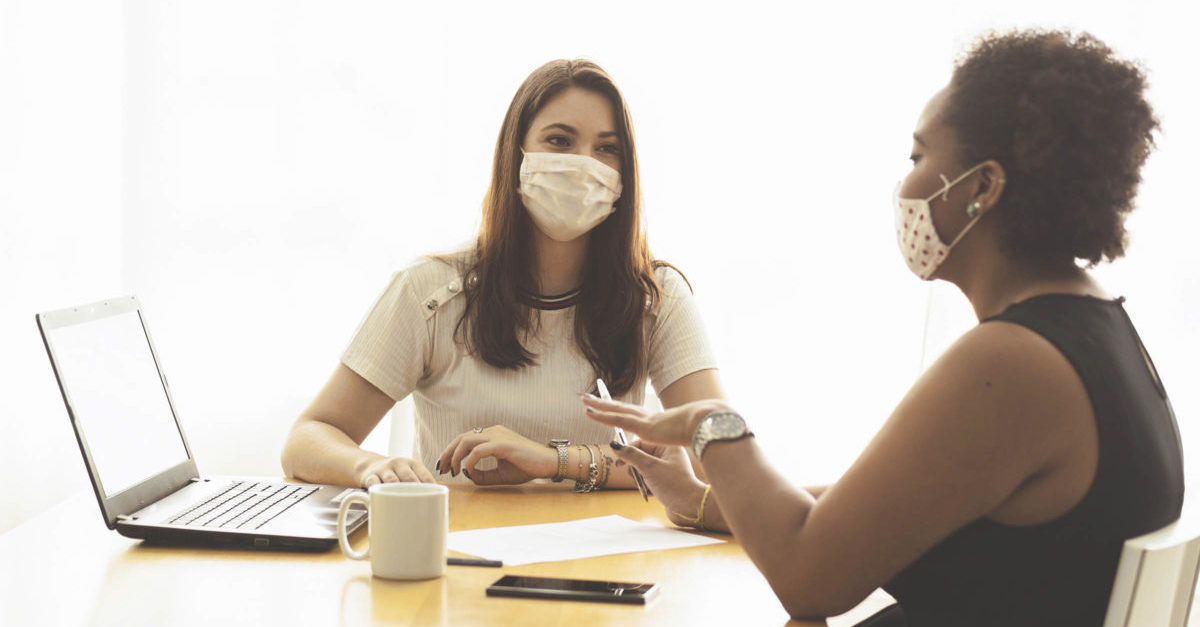As government and business leaders balance economic and public health concerns, organizations across the country are seeking thoughtful, customizable approaches to return their employees to the workplace. When thinking about what plan is right for your organization, the first step is to ask the right questions.
Here are five questions every organization should be asking itself. If you don’t know (or don’t like) the answers, you may not be ready to return employees to their former work environments safely.
Are my employees prepared?
Getting employees ready to return to the workplace – or having employees adjust to changes in the workplace – will require population-specific planning, preparation, and communication. Your employees need to understand the measures being taken to ensure their health and safety.
Communications should include social distancing and hygiene expectations, changes to shifts or hours of operation, screening requirements such as temperature checks and self-assessment surveys, use of personal protection such as masks, processes for testing employees who have had exposure or are symptomatic, sick time policy, and contact tracing processes.
A comprehensive communication plan will ensure employees understand the complexities of creating a workspace designed to minimize the risk of transmitting the coronavirus and other communicable diseases in the future.
Do we have a workforce readiness plan?
Creating a workforce readiness plan provides a roadmap for a safe and healthy workplace. It is important to have a plan that includes an assessment of which employees need to be on-site first and which employees can be brought back last. Consider if employees can continue to work from home and which employees will require accommodations.
Once back in the workplace, determine the plan for physical distancing such as maintaining six feet between workspaces, rearranging desks to offset, bringing in teams alternatively for two-week periods, staggering shifts, and more.
Are my physical spaces set up to create a safe and healthy work environment?
Physical space planning should be a priority to reduce the spread of infectious diseases. Consider providing hand sanitizer gel and disinfectant wipes for each employee or establish sanitizing stations.
Work with your janitorial service and maintenance team on a deep cleaning of the entire work area and create a plan on exactly what type of cleaning will take place each evening. Look at airflow in all areas to ensure proper circulation, ventilation, and filtration/purification.
When thinking about physical spaces, assessing personal equipment is also crucial. A station should be established on each floor/entrance into your workplace where laptops, office equipment, backpacks, lunch containers, and other personal items can be cleaned each day when employees come to work.
High traffic areas require proper evaluation as well. Posting COVID-19 flyers detailing proper handwashing, appropriate physical and social distancing, and other sanitary measures where employees will see them can be a helpful reminder as they go about their day.
Assess your restroom sizes and layouts—a protocol will need to be put in place to limit the number of people in communal restrooms, elevators, entrances, meeting rooms, or break rooms at one time. Post signs on the doors or, if needed, implement marked off congregation areas that ensure six feet of separation as people wait to access their work area. Staggered shifts, partitions, technology tools, and post-use cleaning protocols can help decrease exposure as well.
When it comes to the breakroom setup, consider discontinuing the use of shared refrigerators or coffee stations, and encourage employees to bring their lunch in an insulated bag. If you have a cafeteria or food service area, it is important to work with the catering company to assess how and when food will be made available or to temporarily discontinue the service.
Evaluate the area where people normally eat their lunches to determine if tables can be moved and identify the maximum number of people that can sit at tables to ensure proper distancing. Continuing post-use cleaning protocols will be important here as well.
What about the mail?
Keeping employees safe includes a process for incoming deliveries such as mail (letters and packages) and supplies. Create a plan for 24-hour materials quarantine prior to delivering to the recipient or have an alternate solution to minimize the congregation in a mailroom or supply room area.
Create a protocol for mail and administrative employees to wear masks and gloves to reduce exposure to and transfer of infectious diseases. If requiring your employees to wear gloves and or masks, proper training on how to remove gloves and or masks to ensure this approach is effective.
And then there is everything else…
In addition to comprehensive answers to the aforementioned questions, there is much more to consider. Review your state and local (county/municipal) guidelines for reopening your organization. Each municipality should have a coronavirus website that provides up-to-date guidelines.
Flu season could be difficult, and you may want to minimize employees with flu symptoms vs. COVID symptoms. Consider mandating flu shots for employees to protect the health of your workforce.
For many, traveling for work is a regular occurrence. If an employee is required to travel, consider having the employee work from home for 14 days upon their return. Another aspect of travel is also employee travel for PTO/vacation; it might be necessary for the employee to work from home for 14 days following personal travel as well.
Create a plan for vulnerable employees or those at higher risk—age 60 or older, chronic lung or heart disease, immune-compromised, morbidly obese (40 or higher BMI), diabetes, liver or kidney disease–and how to accommodate a safer transition back into the workplace for them.
Review your ADA process for addressing high-risk employee’s concerns. Taking your employees’ personal concerns and health risks into consideration will help allow them to feel supported and safe when getting ready to return to the workplace.
You might also like
Subscribe to our newsletter and stay on the cutting edge of worksite healthcare.










